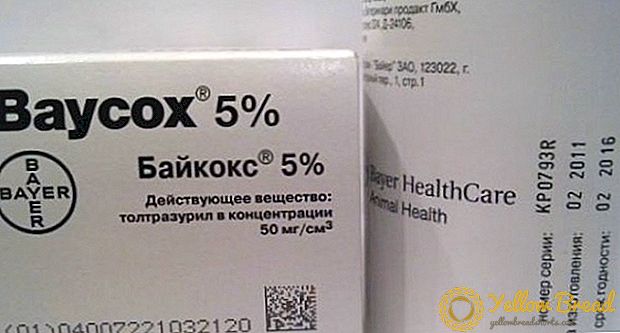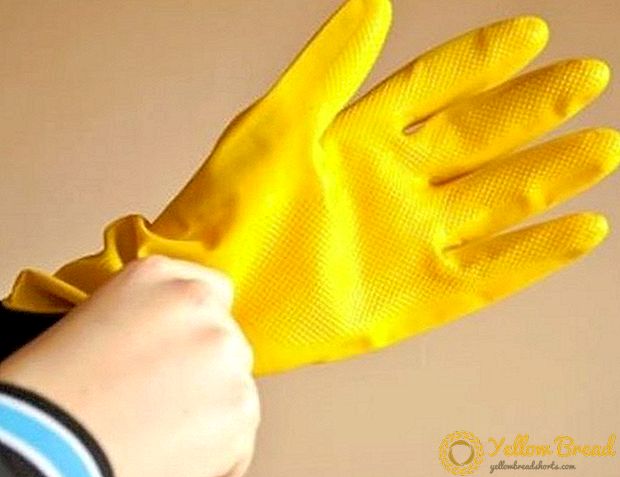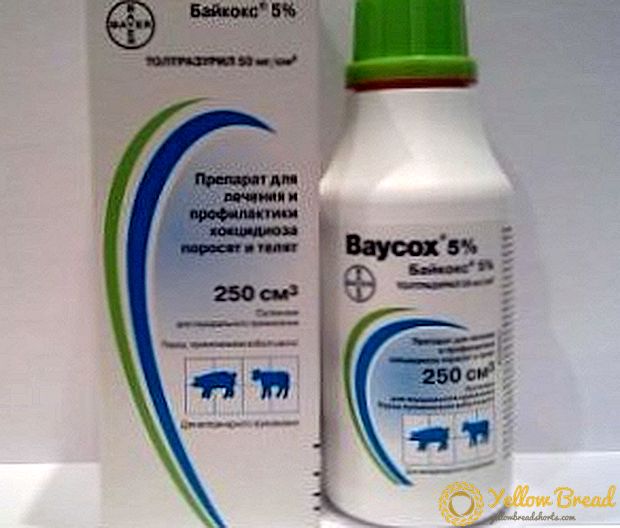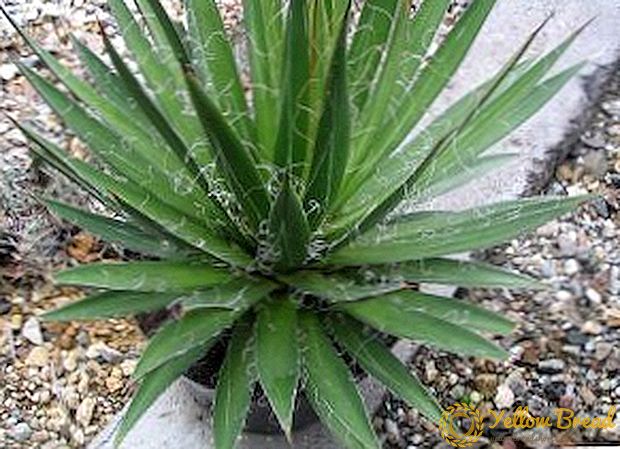 A disease like coccidosis is quite common in rabbits.
A disease like coccidosis is quite common in rabbits.
This is an invasive disease caused by coccidia, a parasite. The disease affects the intestines and liver.
Therefore, many livestock keepers with themselves the drug "Baykoks". Its application allows to achieve a positive result at all stages. Subject to certain rules, the drug does not cause side effects..
In this article you will learn how to properly give the drug "Baykoks" to rabbits and about contraindications of this medicine.
- Description and indications of the drug "Baykoks"
- How does "Baykoks" on rabbits
- Baycox: instructions for use of the drug for rabbits (method of use and dosage)
- Precautions when working with the drug "Baykoks"
- Contraindications
- Storage conditions and shelf life of the drug "Baykoks"
Description and indications of the drug "Baykoks"
The product contains toltrazuril (2.5%), which is mixed with a special solvent. It has an anticoccidian action. The drug itself is a colorless liquid and has no odor. Sold in liter plastic bottles.
The main symptoms of coccidiosis:
- Poor appetite;
- Rapid weight loss;
- Wool becomes disheveled and does not shine;
- Mucous membranes become yellow in color;
- There is diarrhea.
The incubation period is 3 days.
How does "Baykoks" on rabbits
Many drugs that are used for coccidiosis, do not always cope with the task. However, this specimen is resistant to many pathogens and is intended for use for broilers, geese, ducks, turkeys and rabbits.
The drug destroys any bacteria that can cause coccidiosis. It kills coccidia at all stages of development and does not reduce the immunity of the animal. Can be combined with other medicines and feed additives.
Baycox: instructions for use of the drug for rabbits (method of use and dosage)

The tool can be purchased in two versions - "Baykoks 2.5" and "Baikoks 5", and each has the same instruction. Shake well before use.
The drug is used as follows: "Baykoks" with a concentration of 2.5% must be diluted in water (1 liter of water per 1 ml of the drug). More concentrated product does not need to be dissolved. Next, the mixture is poured into a drinker instead of water. The procedure is repeated 3 days in a row. Then it is recommended to spend a break of 5 days and repeat the course.
“Baycox 5” is given immediately to the mouth once. Dosage - 0.2 ml per 1 kg of rabbit weight.
The course of treatment is 3 days. With an acute degree of the disease - 5 days.
Prevention is carried out before delivery. After childbirth, small rabbits (aged 25 days or more) can be given once and not to worry about parasites. If you did not give the rabbit medicine, then 5 days after the first time, you need to repeat the use of "Baycox" to young rabbits.
Also prophylaxis can be carried out 2 times a year.
Precautions when working with the drug "Baykoks"

Baycox has not only instructions for use for rabbits and birds, but also precautions.
- When working with the drug, follow the general rules of personal hygiene and safety (wear sterile gloves);
- In case of contact with skin or mucous membranes, rinse quickly with plenty of water;
- The bottle should be discarded and not used for food purposes;
- At the expiration of the term can not be applied;
- The medicine must be kept out of the reach of children.
Contraindications
Baycox has contraindications for use for pregnant rabbits and during lactation.
The medicine belongs to the third class of danger. This means that Baycox is safe for rabbits and will not cause side effects even if the dosage is exceeded.
Storage conditions and shelf life of the drug "Baykoks"
The instructions indicate that the package can be 10 ampoules or 1 liter in a bottle.
 All containers should be tightly closed and stored in a dry place, to avoid sunlight on the packaging and stored at temperatures up to 25 ° C. You also need to keep the medicine away from food.
All containers should be tightly closed and stored in a dry place, to avoid sunlight on the packaging and stored at temperatures up to 25 ° C. You also need to keep the medicine away from food.
The solution in the bottle is active within 48 hours after opening. If a precipitate appears, stir the solution thoroughly or shake. The shelf life of the drug under all conditions - 5 years from the date of manufacture.
With the help of our instructions, you were able to learn how to give medicine to rabbits, as well as what precautions and contraindications exist.






